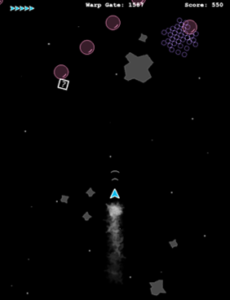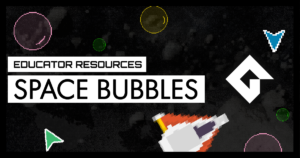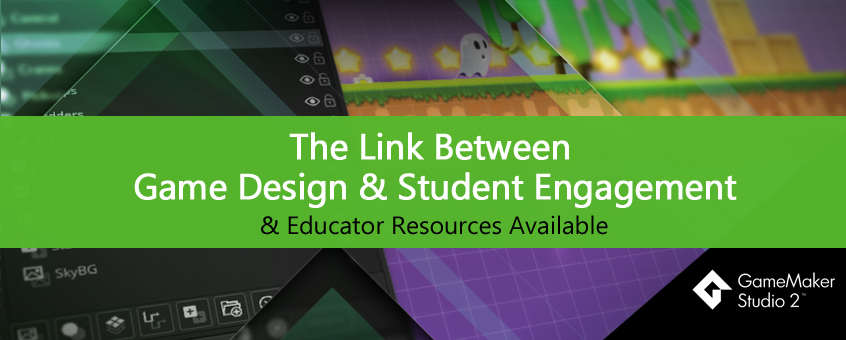 Using game design to teach coding challenges students to cooperatively solve problems and explore their creativity. It strengthens the bonds between the teacher and their students while improving performance across all STE(A)M subjects. In fact, games are increasingly used as an introductory tool for programming.
Using game design to teach coding challenges students to cooperatively solve problems and explore their creativity. It strengthens the bonds between the teacher and their students while improving performance across all STE(A)M subjects. In fact, games are increasingly used as an introductory tool for programming.
Learning how to code is an essential skill for future generations. As an educator, how can you bring this to your classroom? We know you are already busy. Luckily, GameMaker has created free educator resources that can help use game design to captivate your students, particularly for students in grades 7-12.
Game Design, Creativity and Learning
One of the really powerful attributes of teaching game design, making it ideal for education, is the fact that it is open-ended. Students are free to think creatively. Every game is unique and so is the programming needed for it. Students can set their own parameters and resolve questions themselves. There isn’t a guide they have to adhere to. All of this makes the process very empowering for the students. Teachers recognize this in their classrooms.
 “I see the positive results of being stuck because there aren’t clear answers to their design questions, which is a positive experience in the end, but at the time manifests as frustration,” Mark Suter, a high school Computer Science teacher from Elida, Ohio shares. “I simply remind them that it’s okay to be stuck, and help develop their problem-solving skills, such as properly using forums to find answers rather than immediately seeking me out.”
“I see the positive results of being stuck because there aren’t clear answers to their design questions, which is a positive experience in the end, but at the time manifests as frustration,” Mark Suter, a high school Computer Science teacher from Elida, Ohio shares. “I simply remind them that it’s okay to be stuck, and help develop their problem-solving skills, such as properly using forums to find answers rather than immediately seeking me out.”
Game design allows for a facilitative approach to classes and students develop a variety of skills working and communicating with others. Since there aren’t rights and wrongs, the students have control over the work that they create. Students are naturally interested in games, so it is not surprising that they become passionate about the projects they work on.
“Learning to Program” – Resource for Educators
 GameMaker offers a complete resource for educators. It supports educators in teaching students how to program in GameMaker Studio 2 using Drag and Drop. Students make a game called Space Bubbles, which introduces them to the basics of programming. It takes both teacher and student through the fundamentals of how to code using a game. It is designed for ages 11 to 14, but can also help with higher and lower levels as well. In it, you’ll find eight one hour lessons, tutorials, homework sheets (which don’t require GameMaker access), a teacher guide and much more. Details here.
GameMaker offers a complete resource for educators. It supports educators in teaching students how to program in GameMaker Studio 2 using Drag and Drop. Students make a game called Space Bubbles, which introduces them to the basics of programming. It takes both teacher and student through the fundamentals of how to code using a game. It is designed for ages 11 to 14, but can also help with higher and lower levels as well. In it, you’ll find eight one hour lessons, tutorials, homework sheets (which don’t require GameMaker access), a teacher guide and much more. Details here.
You can access this resource in several ways. Download the full program, the teacher guide, lessons, and tutorials. If you’d like to learn about purchasing educational licenses for GameMaker in the USA and Canada, please contact Studica.
Why GameMaker?
- Intuitive ‘Drag and Drop’ feature (DnD™) allows students to create a game quickly.
- Students understand the building blocks before having to learn how to code!
- Then, you can easily take the next step into programming with GameMaker.
- You can easily view & edit the code behind the DnD™ actions.
Share this Post

